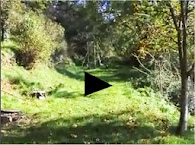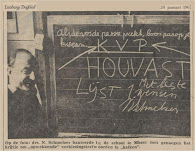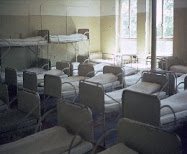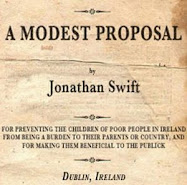In de nieuwste zaak in Engeland opnieuw duidelijk gemaakt in de rechtszaak tegen Grant Ferris.
Een nu 72 jarige benedictijner monnik, gewaardeerd priester en leraar en nu voor de rechter voor 20 zaken waarop hij "schuldig" bekend, 7 anderen ontkende. Seksueel misbruik tussen 1966 en 1975van jongentjes niet ouder dan 12-13 jaar. Niet zomaar een monnik in niet zomaar een abdij. Hijzelf zoon van een kennelijk belangrijke figuur , Tory, uit het House of Commons, conservatief als oorlogsvliegenier een oorlogsheld. Een belangrijke katholiek in een parlement.
Zijn abt Basil Hume, de latere Kardinaal Hume. Die, toen het bekend werd, hoe verbazingwekkend hem dus overplaatst! Basil Hume, het belangrijkste rkk gezicht in de UK. Die zijn mond hield tientallen jaren en zo misbruik mogelijk maakte gepleegd door minimaal 6 anderen. De politie vermoedt dat er nog 3 andere misbruikers zijn geweest, onder wie 2 monikken, die inmiddels zijn overleden.
En natuurlijk, oude zaken. Zoals de huidige abt in alle commentaren benadrukt. Er zou nu een totaal ander beleid zijn. Laten we het hopen.
Maar de politie kon pas iets met de al jaren bestaande verdenkingen nadat in 2003 een psychologe, door de school ingehuurd ter verbetering van de veiligheid en de risico factoren, naar de politie stapte omdat zij vreesde voor de veiligheid van de leerlingen door de weigeracgtige houding vanui schook en abdij.
Anderhalf jaar lang met 30 politiefunctionarissen plu s maatschappelijk werkers onderzoeken. Honderden vroegere leerlingen ondervraagd: die merendeels hun mond hielden, mannen van in de 40....
Minstens zo belangrijk is ook hier weer de bevestiging van het inmiddels overbekende patroon.
In al die landen weer. Zwijgen, overplaatsing, Het Geheim.
Wanneer dat in al die situaties in die al die landen steeds zo is, wat zou dan Nederland zo ongelooflijk anders maken?
Police inquiries into past crimes complicated by school bonds
Mark BranaganPOLICE investigations into crimes from years gone by are never easy – and in
this case were complicated by the setting of one of England's leading Roman
Catholic schools presided over by an order of Benedictine monks.
More than 30 officers, plus social workers, were involved in the 15-month inquiry at Ampleforth.
Ampleforth College – motto God Protect Him – is buried in
the countryside near Helmsley. Old boys include Cardinal Basil Hume, Andrew
Parker-Bowles, Rupert Everett, the Today TV programme presenter Edward Stourton, and Philip Lawrence, the murdered head of St George's RC School in Maida Vale, London.
There had been a case against a monk in 1996, and the school's
former finance chief was jailed in 2000 for downloading child porn, but there
seemed no cause for further concern until 2002 when a complaint was referred to
them about housemaster Christian Shore.
Shore was sacked after admitting, during an internal investigation, sexually abusing a teenage pupil in his care.
The school said in the student's final year there was an incident of "improper
physical contact" of a sexual nature.
Police investigated but there was no evidence to support the complaint and the complainant did not pursue the matter.
Shore was never placed on a Sex Offenders Register because he was never
convicted of a criminal offence.
Police were keeping an eye on the
situation when Elizabeth Mann was engaged as a psychologist by Ampleforth to
look "at people who might have an issue". Both Grant-Ferris and another
child-molesting monk, Gregory Carroll, were referred.
Det Supt Barry Honeysett said: "Elizabeth Mann and her daughter, also a psychologist, came to police as a result of a failure to act by the college on their recommendations."
A fall-out then occurred between Dr Mann and the then Abbot Timothy
Wright over a specific recommendation, which is not being disclosed, in relation
to Grant-Ferris.
Det Supt Honeysett continued: "The college agreed to act but she became concerned about the length of time it was taking. There was a breakdown with the abbot. Her work at the Abbey was curtailed and she thought the authorities should be made aware of the risk situation."
For Det Supt Honeysett the long and difficult inquiry was a learning curve. He said:
"Priests form a lasting bond with pupils. They are like parents to them and keep
that bond later in life and would not entertain the fact they have done anything
wrong.
"Victims tended to be in their early 40s, with families who do not know what happened – and the victims want to keep it that way."
It was
not therefore surprising that trawls of hundreds of former pupils in most cases
produced nothing.
However, enough did come forward to enable police to prepare a case.
Det Supt Honeysett added: "There are those who have seen this as something of a release from something which has been troubling them for many years. They have been able to speak about their feelings of anger about what happened to them.
"There were also those not looking to take the matter forward but who were prepared to give evidence at court to ensure individuals were held to account."
The team was determined to root out all threats to children within the community – they perceived the risk might extend beyond the school itself because of the Ampleforth layout.
The Abbey itself is in the centre of the school, while on the other side are hospitality facilities for retreats and spiritual support, which often attract families with children.
He said police and social services had forged a very good relationship
with the Abbey which had faced its own problems in dealing with members who
might pose a risk.
18 November 2005



















2 opmerkingen:
Uitgetreden
Wanneer?
Waar?
Anoniem ??
Een reactie posten